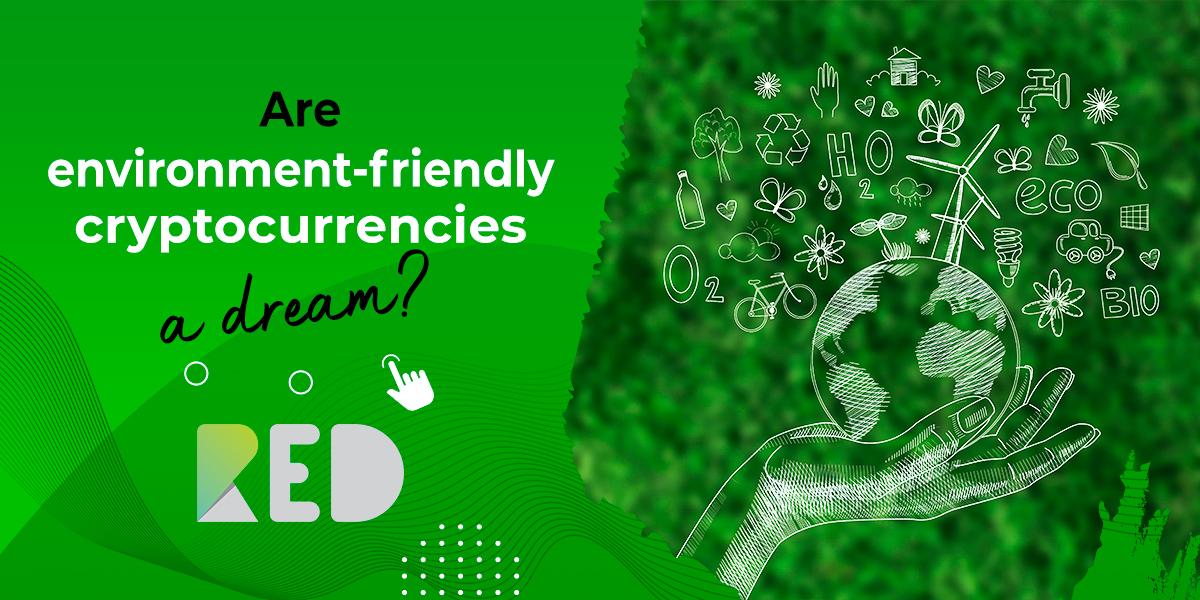“The blockchain industry has been booming.” We’re sure you have heard this phrase umpteen times in the last few years and it remains to be true. Cryptocurrencies, NFTs, Defi, and numerous other niches within the industry are gaining prominence. While the upsides are the many, one of the most significant downsides is the impact on the environment.
Cryptocurrencies such as Bitcoin and Ethereum received a lot of criticism from experts about their impact on the environment. According to Cambridge’s Bitcoin Electricity Consumption Index, in 2021, Bitcoin was consuming about 121 terawatt-hours of electricity a year. As we write this, the number is around 350 terawatt-hours.
To put things into perspective, this is way more than the consumption of Argentina or Microsoft, Apple, Google, and Facebook combined. What’s more astonishing is that only 39% of this electricity comes from renewable energy sources.
Ethereum faced similar issues, and considering that Bitcoin and Ethereum are the world’s leading cryptocurrencies people use, they have adverse effects on the climate. People are calling cryptocurrencies and blockchain the future of the economy, and with these numbers before us, there is a crucial question we need to answer.
Are environment-friendly cryptocurrencies a dream?
The short answer is that it is an uphill struggle to have an environment-friendly cryptocurrency, but it’s not a dream. Let us dive in a little deeper and take you through how it can be possible.
Can cryptocurrencies be sustainable?
For all cryptocurrencies to run, we need electricity. We understand it’s an obvious fact, but what people miss is that the source of this electricity is not renewable in most cases, as mentioned earlier.
So, one way to make cryptocurrencies more eco-friendly is to solve the problems at the source. The electricity used by Bitcoin miners and validators of cryptocurrency transactions can be generated from renewable sources.
While some are trying to establish operations in areas where a higher volume of renewable energy is generated, others are building infrastructure to generate renewable energy. In the former scenario, the idea is to use an excess of energy created that can be used for mining.
This for obvious reasons has flaws because the consumption to generation ratio is not balanced and it is incredibly difficult to generate that much electricity. While the latter scenario is slightly better, it still demands huge investment and companies lack the funds they need.
So what are the other ways we can mitigate climate impact, as these companies try to find solutions for their operations?
Invest in eco-friendly cryptocurrencies
There are numerous cryptocurrencies in the market that are not only eco-friendly but also beneficial to users. A few examples of these are Cardano, Nano, Solarcoin, and more.
These consume a fraction of the electricity per transaction when compared to Bitcoin and Ethereum. What makes these coins even more beneficial, is that there is no arms race when it comes to becoming validators on the network.
In mining, the more sophisticated your equipment, the higher your computing power, and hence the better the chances of you mining blocks and earning rewards. This creates unnecessary competition, which consumes an astronomical amount of electricity and negatively impacts the environment.
With cryptocurrencies such as Cardano, you don’t have to be a part of the arms race. This means the transactions are easy on the climate, and you have a better chance of earning rewards.
While there are numerous such platforms, one that truly stands out is the RED Platform. Here’s how:
The RED Platform – the first decentralized blockchain for carbon offsetting
The RED Platform is an ecosystem for energy producers, consumers, and companies. The idea is rather simple.
If you’re a green energy producer, you can earn rewards in the form of REO-G tokens on the platform. The REO-G token is an ERC-721 token that will allow energy producers to prove the origin of their energy. This token can be claimed for the energy that was produced no longer than 12 months before the claim.
On the other hand, if you’re a green energy consumer, then, like the producers, you can earn rewards too in the form of GTK tokens. These are of the ERC-20 standard. GTK tokens that are obtained through a claim process can be sold for MWAT only, while tokenized carbon credits under the form of GTKs can be purchased in FIAT or cryptocurrencies depending on the project developer’s choice.
Companies on the platform can buy these rewards, which essentially represent a good impact on the climate and offset their carbon footprint. Thus any organization can balance out its own carbon footprint by buying these eco-friendly cryptocurrencies minted by the RED Platform: REO-G and GTK tokens.
Also, the platform’s native currency is MWAT which is used for all transactions. This is core to what RED is aiming for – an ecosystem of sustainable businesses, consumers, and energy producers.
The businesses will not only be able to offset their carbon footprint but will also be able to use blockchain technology and access more features and even add sustainable projects to the platform. You can learn more about the RED Platform on the official website.



